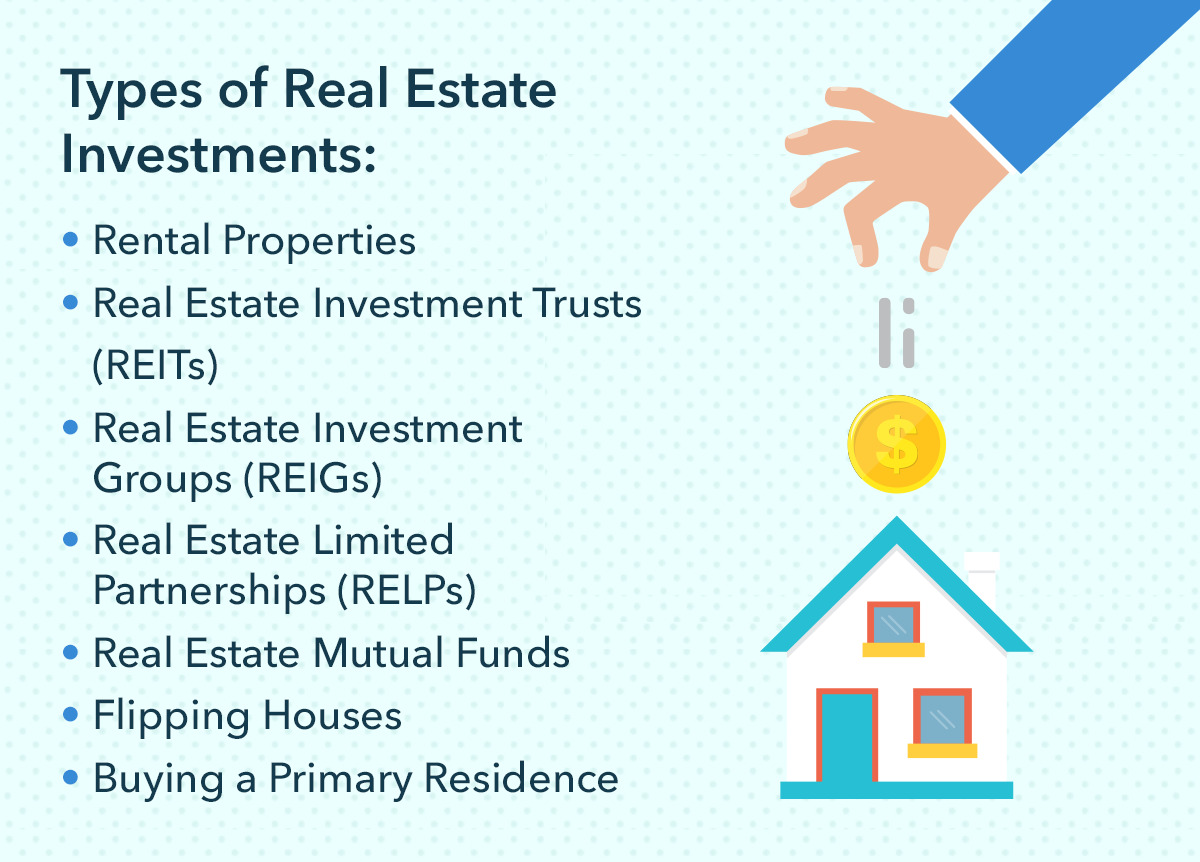Introduction
Real Estate Investment Trusts, commonly known as REITs, have gained significant popularity in recent years as an attractive investment option. Whether you are a seasoned investor or just starting to explore different investment opportunities, understanding the basics of REITs can help you make informed decisions about your financial future.
REITs offer individuals the opportunity to invest in real estate without the need to directly own and manage properties. By pooling funds from multiple investors, these investment vehicles provide the potential for steady income and long-term capital appreciation. With their unique structure and tax advantages, REITs have become an integral part of many investment portfolios.
Throughout this article, we will delve into the key aspects of REIT investments, including how they work, the potential benefits they offer, the different types of REITs, and the factors to consider before investing. By the end, you will have a solid understanding of REITs and be better equipped to decide if they align with your investment goals and risk tolerance.
What are REITs?
Real Estate Investment Trusts (REITs) are specialized companies that own, operate, or finance income-generating real estate properties. They allow individual investors to access the benefits of real estate ownership without the need for large amounts of capital or the responsibilities associated with property management.
REITs were first established in the United States in 1960, following the passage of the Real Estate Investment Trust Act. Since then, they have gained popularity worldwide, with many countries adopting their own versions of REIT legislation.
These investment vehicles primarily focus on generating income from rent and capital appreciation from the properties they own. By law, REITs must distribute at least 90% of their taxable income to shareholders in the form of dividends, making them an attractive option for income-seeking investors.
REITs come in various forms, including equity REITs, mortgage REITs, and hybrid REITs. Equity REITs are the most common type and invest in and own real estate properties. They generate income through collecting rent from tenants and may specialize in a specific property type, such as residential, commercial, or industrial.
Mortgage REITs, on the other hand, invest in mortgages or mortgage-backed securities and generate income from the interest on these investments. Hybrid REITs combine elements of both equity and mortgage REITs, investing in properties and mortgages simultaneously.
Overall, REITs offer individuals the opportunity to invest in a diversified portfolio of real estate assets, which would otherwise be difficult to achieve on their own. With their transparent structure and regular income distributions, REITs have become a popular choice for both novice and experienced investors seeking exposure to the real estate market.
How do REITs work?
Understanding how REITs work is essential to grasp their unique structure and benefits. REITs function as publicly-traded companies that own and operate income-generating real estate properties. Here’s a breakdown of how they work:
1. Property Acquisition: REITs acquire a diverse range of real estate properties, including residential, commercial, retail, industrial, and healthcare properties. They may also invest in real estate-related assets such as mortgages, real estate loans, and development projects.
2. Rental Income: Once the properties are acquired, REITs generate income from various sources, primarily through renting out the properties. Tenants pay rent, which becomes the primary source of revenue for the REITs. Some REITs may also generate income through other means, such as lease agreements with anchor tenants or percentage-based rents.
3. Property Management: REITs handle all aspects of property management, including maintenance, repairs, tenant services, and lease agreements. This relieves individual investors from the day-to-day responsibilities of property management.
4. Regular Dividend Distribution: One of the key benefits of investing in REITs is the regular dividend distribution. By law, REITs must distribute at least 90% of their taxable income to shareholders in the form of dividends. Investors receive a share of the rental income, usually paid quarterly or monthly, providing a steady income stream.
5. Publicly-Traded Investment: Unlike traditional real estate investing, which typically involves directly owning properties, REITs are publicly-traded on stock exchanges. This enables investors to buy and sell shares of REITs, offering liquidity and flexibility compared to direct ownership of properties.
6. Professional Management: REITs are managed by experienced real estate professionals who make investment decisions on behalf of the REIT and its shareholders. These professionals analyze market trends, identify potential investment opportunities, and manage the overall portfolio to maximize returns.
Overall, REITs provide individuals with a convenient and accessible way to invest in real estate without the need for significant capital or expertise in property management. By pooling funds from multiple investors, REITs provide the opportunity to diversify investments across various properties and generate regular income through rental payments.
Benefits of Investing in REITs
Investing in Real Estate Investment Trusts (REITs) offers several advantages that make them an attractive option for investors seeking exposure to the real estate market. Here are some key benefits of investing in REITs:
1. Diversification: REITs provide investors with the opportunity to diversify their portfolios by investing in a wide range of real estate properties across different sectors. This diversification helps reduce the risk associated with investing in a single property or location.
2. Liquidity: Unlike direct ownership of real estate, which can be illiquid and require a lengthy process to buy or sell, REITs are publicly-traded on stock exchanges. This gives investors the ability to buy and sell shares at market prices, providing liquidity and flexibility.
3. Passive Income: REITs are required by law to distribute a significant portion of their taxable income to shareholders in the form of dividends. This regular income stream can provide investors with a stable source of passive income, making them popular among dividend-focused investors.
4. Professional Management: When investing in REITs, investors benefit from professional management. REITs are managed by experienced teams of real estate professionals who handle property acquisition, management, and the overall strategy. This expertise can help optimize returns and mitigate potential risks.
5. Tax Advantages: REITs enjoy certain tax advantages that can be beneficial for investors. By distributing most of their taxable income as dividends, REITs are not subject to corporate income tax. Investors, however, are subject to ordinary income tax rates on the dividends they receive.
6. Accessibility: Investing in real estate typically requires a significant amount of capital. However, REITs offer a more accessible entry point into the real estate market. Investors can start with smaller amounts and have the opportunity to participate in high-value properties or portfolios.
7. Potential for Capital Appreciation: In addition to regular income from dividends, investors in REITs also have the potential for capital appreciation. As the value of the underlying real estate properties in the REIT portfolio increases, the share price of the REIT can also appreciate, providing investors with capital gains.
8. Investment Transparency: REITs are subject to regulatory requirements, including disclosure of financial and operational information. This transparency allows investors to make better-informed decisions based on the REIT’s performance and prospects.
Overall, investing in REITs offers the advantages of diversification, liquidity, passive income, professional management, tax advantages, accessibility, potential for capital appreciation, and investment transparency. These benefits make REITs a compelling option for investors looking to gain exposure to the real estate market while enjoying the potential for regular income and long-term growth.
Types of REITs
Real Estate Investment Trusts (REITs) come in different types, each with its own investment focus and strategies. Understanding the different types of REITs can help investors tailor their investment approach based on their preferences and investment goals. Here are the main types of REITs:
1. Equity REITs: Equity REITs are the most common type of REITs. These REITs invest in and own income-generating properties such as residential, commercial, retail, industrial, and healthcare properties. Equity REITs generate income mainly through rental payments from tenants. They can focus on specific property types or operate across multiple sectors.
2. Mortgage REITs: Mortgage REITs, also known as mREITs, invest in mortgages and mortgage-backed securities. Instead of owning properties, these REITs earn income by receiving interest payments from borrowers. Mortgage REITs typically focus on residential or commercial mortgages and aim to generate income from the interest spread between the mortgage interest received and the interest paid on their borrowings.
3. Hybrid REITs: Hybrid REITs combine elements of both equity REITs and mortgage REITs. These REITs invest in a mix of real estate properties and real estate-related assets such as mortgages, real estate loans, and development projects. Hybrid REITs aim to benefit from both rental income and interest income, providing investors with a diversified revenue stream.
4. Public Non-listed REITs: Public Non-listed REITs, also known as PNLRs or non-traded REITs, are REITs that are registered with the Securities and Exchange Commission (SEC) but do not trade on stock exchanges. These REITs are sold to investors through broker-dealers or directly by the REIT sponsor. PNLRs typically offer longer-term investment options and may have limited liquidity compared to publicly-traded REITs.
5. Private REITs: Private REITs are similar to PNLRs in that they are not publicly traded. However, private REITs are typically offered only to accredited investors and have more restrictive investment criteria. Private REITs may provide additional flexibility and unique investment opportunities, but they also come with higher investment minimums and liquidity restrictions.
6. International REITs: International REITs invest in real estate properties and assets located outside the investor’s home country. These REITs provide the opportunity to diversify geographically and gain exposure to international real estate markets. International REITs allow investors to access global real estate opportunities without the need for direct international property ownership.
It’s important to note that the availability of different types of REITs may vary depending on the country or region of investment. Investors should research the specific regulations and offerings in their respective jurisdictions before considering investments in REITs.
By selecting the appropriate type of REIT based on investment objectives and risk tolerance, investors can align their real estate investment strategies with their financial goals.
How to Invest in REITs
Investing in Real Estate Investment Trusts (REITs) is relatively straightforward and accessible. Here are some steps to consider when investing in REITs:
1. Research and Educate Yourself: Begin by researching and understanding the basics of REITs. Learn about their structure, different types, investment strategies, and historical performance. This knowledge will help you make informed investment decisions.
2. Determine Investment Objectives: Clarify your investment objectives, including your desired level of income, growth, and risk tolerance. This will help you choose the appropriate type of REIT and align your investment strategy accordingly.
3. Brokerage Account: Open a brokerage account with a reputable financial institution that offers a wide range of investment options, including REITs. Ensure the brokerage firm is registered and regulated by the appropriate authorities.
4. Research and Select REITs: Conduct thorough research on different REITs to identify potential investment opportunities. Consider factors such as the REIT’s historical performance, management team, property portfolio, dividend history, expenses, and risk profile.
5. Read the Prospectus: When investing in a specific REIT, carefully review the prospectus, which provides detailed information about the REIT’s investment strategy, risks, fees, and financial performance. Understand the terms and conditions before making any investment decisions.
6. Determine Investment Amount: Decide how much capital you are willing to invest in REITs. Consider your overall investment portfolio, diversification goals, and risk tolerance when determining the appropriate allocation to REITs.
7. Buy REIT Shares: Use your brokerage account to buy shares of the selected REIT(s). You can typically purchase REIT shares through the stock market, similar to buying shares of publicly-traded companies. Specify the number of shares or the amount of money you want to invest.
8. Monitor and Review: Regularly monitor the performance of your REIT investments. Stay informed about any updates, news, or changes that may affect the REIT’s performance. Consider reviewing your investment strategy periodically to ensure it aligns with your financial goals.
9. Reinvest Dividends (if desired): Some REITs offer dividend reinvestment plans (DRIPs), which allow you to automatically reinvest your dividends back into additional shares of the REIT. This can help compound your investment over time and potentially increase your overall return.
10. Seek Professional Advice (if needed): If you are unsure about certain aspects of investing in REITs or need assistance in constructing a well-diversified portfolio, consider consulting with a financial advisor who specializes in real estate investments. They can provide personalized guidance based on your financial situation and goals.
Remember, investing in REITs carries risks, including fluctuations in real estate values, interest rate changes, economic conditions, and market volatility. It is essential to diversify your investment portfolio and carefully consider your risk tolerance before investing in REITs.
Risks Associated with REIT Investments
While investing in Real Estate Investment Trusts (REITs) can offer attractive benefits, it’s important to be aware of the potential risks involved. Here are some common risks associated with REIT investments:
1. Market Risk: REITs are subject to market volatility, much like other publicly-traded securities. The value of your investment can fluctuate based on market conditions, investor sentiment, interest rates, and economic factors that impact the real estate industry as a whole.
2. Real Estate Market Risks: REITs are directly influenced by real estate market conditions. Factors such as supply and demand dynamics, property values, occupancy rates, rental rates, and economic trends in specific regions can affect the performance of REITs. Changes in local or national real estate markets can impact rental income and property values.
3. Interest Rate Risk: REITs, particularly mortgage REITs, are sensitive to changes in interest rates. Rising interest rates can increase borrowing costs for REITs, potentially affecting their profitability and ability to generate income. Changes in interest rates may also impact the valuation of properties in the REIT’s portfolio.
4. Regulatory and Legislative Risks: Changes in regulations, tax laws, or government policies can have an impact on the operations and profitability of REITs. Regulatory risks include changes in laws affecting real estate financing, tax treatment, securities regulations, zoning laws, and environmental regulations, among others.
5. Tenant Risks: The financial stability and creditworthiness of tenants can impact the rental income generated by REITs. Defaulted rent payments or a high tenant turnover rate can lead to decreased cash flow and lower profitability for the REIT. Economic downturns or industry-specific challenges may also affect tenant occupancy and lease renewals.
6. Debt and Leverage Risks: Some REITs utilize debt to finance their property acquisitions. While it can enhance returns when property values are rising, high levels of debt can expose REITs to financial risks, especially during economic downturns or periods of rising interest rates. Excessive leverage can lead to higher interest expenses and difficulties in refinancing obligations.
7. Management Risks: The management team of a REIT plays a crucial role in its success. Inadequate property management, poor decision-making, or a lack of experience and expertise can adversely affect the REIT’s performance. It’s essential to evaluate the track record, expertise, and corporate governance of the REIT’s management team before investing.
8. Liquidity Risk: While REITs offer liquidity compared to direct real estate ownership, some REITs, such as non-listed or private REITs, may have limited liquidity options. In certain cases, it may be challenging to buy or sell shares of these REITs, potentially limiting your ability to access your investment when desired.
9. Concentration Risk: Investing in a specific type of REIT or focusing on a particular sector, such as residential or retail, can expose investors to concentration risk. If there are adverse developments or challenges in that specific sector, the performance of the REIT and its ability to generate income may be significantly impacted.
10. Investor Sentiment: REITs, like any publicly-traded security, can be influenced by investor sentiment and market psychology. Unfavorable news, market rumors, or a general negative sentiment towards real estate investments can affect the share price of REITs, potentially leading to short-term volatility.
It’s important to carefully assess the risks associated with REIT investments and consider diversification across different types of REITs, property sectors, and geographic locations. Conduct thorough research and, if needed, consult with a financial advisor to understand the specific risks related to the REITs you are considering.
Factors to Consider Before Investing in REITs
Before investing in Real Estate Investment Trusts (REITs), it’s crucial to consider several factors to ensure that they align with your investment goals and risk tolerance. Here are some key factors to consider:
1. Investment Objectives: Define your investment objectives and understand how REITs fit into your overall investment strategy. Clarify whether you are seeking income, capital appreciation, or a combination of both.
2. Risk Tolerance: Evaluate your risk tolerance level. Different types of REITs carry varying levels of risk due to factors such as property sector, leverage, market conditions, and geographic location. Determine your comfort level with market volatility, potential income fluctuations, and the possibility of principal loss.
3. Diversification: Assess whether investing in REITs will provide diversification to your investment portfolio. Consider the various types of REITs, their property sectors, geographic exposure, and how they complement your existing investments.
4. Property Type: Understand the property types in which the REIT specializes. Different property sectors, such as residential, commercial, retail, or healthcare, have unique dynamics and risk profiles. Evaluate whether the specific property sector aligns with your investment goals and future market projections.
5. Management Team and Track Record: Research the experience and track record of the REIT’s management team. Evaluate their expertise in real estate investments, their ability to manage properties, and their decision-making process. A competent management team greatly influences the potential success of a REIT.
6. Financial Performance: Analyze the historical financial performance of the REIT. Evaluate key metrics such as net operating income, occupancy rates, rental growth, and dividend payments. Assess whether the REIT has consistently managed to generate income and deliver returns to shareholders.
7. Dividend Yield and Distribution History: Consider the dividend yield offered by the REIT and its dividend distribution history. Higher dividend yields may indicate a higher income potential, but it’s essential to ensure that the REIT’s dividends are sustainable and backed by a stable revenue stream.
8. Regulatory and Tax Considerations: Understand the regulatory environment and tax implications associated with investing in REITs. Familiarize yourself with the relevant laws, tax treatment of REIT dividends in your jurisdiction, and any potential changes or risks associated with regulations that govern the REIT industry.
9. Transparency and Reporting: Consider the level of transparency and reporting provided by the REIT. Look for REITs that have a robust financial reporting system, regular updates to shareholders, and transparency in their investment holdings, property valuations, and operational metrics.
10. Exit Strategy: Assess the potential liquidity and exit options available for your investment in the REIT. Some REITs may offer easier exit strategies through listing on stock exchanges, while others, such as non-traded or private REITs, may have limited liquidity options.
11. Professional Advice: Consider seeking professional advice from a financial advisor or real estate specialist. They can provide guidance, help you evaluate potential risks, and offer insights into investing in REITs based on your specific financial circumstances and investment objectives.
By carefully considering these factors, you can make informed decisions and select REIT investments that align with your investment goals, risk tolerance, and overall financial strategy.
Conclusion
Investing in Real Estate Investment Trusts (REITs) can be an attractive option for individuals seeking exposure to the real estate market. REITs provide a convenient avenue to invest in a diversified portfolio of income-generating properties without the need for substantial capital or the responsibilities of property management.
Throughout this article, we have discussed various aspects of REIT investments, including their structure, benefits, types, and potential risks. REITs offer advantages such as diversification, liquidity, regular income, professional management, tax advantages, and accessibility. They allow investors to participate in the real estate market, potentially earning returns from rental income and potentially capital appreciation.
When considering investing in REITs, it is crucial to evaluate factors such as investment objectives, risk tolerance, property types, management teams, financial performance, and regulatory considerations. By conducting thorough research, assessing these factors, and seeking professional advice if needed, investors can make informed decisions that align with their financial goals.
It’s important to keep in mind that while REITs offer unique opportunities, they are not without risks. Market volatility, real estate market fluctuations, interest rate changes, tenant risks, and regulatory changes can impact the performance of REIT investments. Investors should carefully evaluate and monitor their investments, diversify their portfolios, and regularly review their investment strategies to mitigate risk.
In conclusion, REITs can be a valuable addition to an investment portfolio, providing diversification, regular income, and potential long-term growth. By understanding the complexities of REIT investments and considering the factors discussed in this article, investors can make informed decisions and potentially benefit from the opportunities presented by REITs.

























